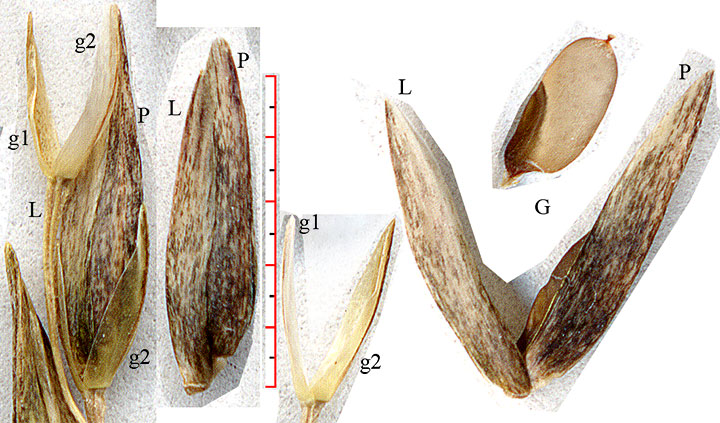
Sporobolus spikelet structure, illustrated with S. compositus var. macer.

Sporobolus spikelet structure, illustrated with S. compositus var. macer.
The spikelet consists, from the base up, of 2 glumes (spikelet bracts: lower [g1] and upper [g2]), and a floret with two bracts (lemma [L] & palea [P]). The floral stigma & anthers may be visible at anthesis; the ovary develops into a grain [G]. When mature the spikelet disarticulates at the glumes (i.e., the floret falls off as a unit, leaving the glumes behind).

The following table shows the great variation in lengths/widths for a single population of S. clandestinus, even in August, when most panicles/spikelets are immature. Although these dimensions do not distinguish the two most generally confused taxa, S. clandestinus & S. compositus var. compositus, spikelet length clearly separates (1) var. drummondii from other varieties of S. compositus; (2) S. neglectus from S. vaginiflorus; and (3) additionally, within S. vaginiflorus relative glume/floret length has been used to distinguish two varieties.
Ten typical S. clandestinus culms with panicles, collected Aug. 4, 2002 (N. Hays Co.):
| culm height cm | culm width mm | infl. length cm | spikelet lengths mm |
|
|---|---|---|---|---|
| 1 | 122 | 2.2 | 34 | 5.5—8.0 |
| 2 | 91 | 1.8 | 24.5 | 3.3—6.2 |
| 3 | 56 | 1.5 | 14 | 5.0—5.9 |
| 4 | 52 | 0.7 | 10 | 6.2 |
| 5 | 51 | 1.1 | 15 | 5.3—6.8 |
| 6 | 48 | 1.4 | 9 | 6.2—6.5 |
| 7 | 47 | 1.2 | 7.5 | 5.3 |
| 8 | 47 | 1 | 10.5 | 8.3 |
| 9 | 39 | 1.4 | 8 | 6.0—8.2 |
| 10 | 39 | 1 | 9 | 4.5 |
Strangely, current keys and descriptions don't recognize this varietal differentia. I also note that Jones et al. merge this variety with var. compositus.
But note the hedge wording (i.e., "usually") in their key. In surveying the 49 TEX/LL S. vaginiflorus collections in 2002 I found that where a sheet had notations such as 'glumes (mostly) longer than floret' they were determined to be var. ozarkanus. But this characteristic was not consistently applied — even specimens with 3–nerved lemmas and glumes longer than florets were determined to be var. vaginiflorus. Specimens with glumes both longer and shorter than the floret were determined as var. ozarkanus. In my view the distribution of these characters, as plotted in the map below, does not support recognition of variety taxa.
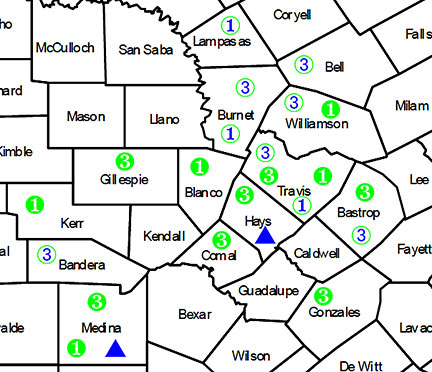 | 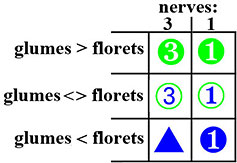 |
|---|
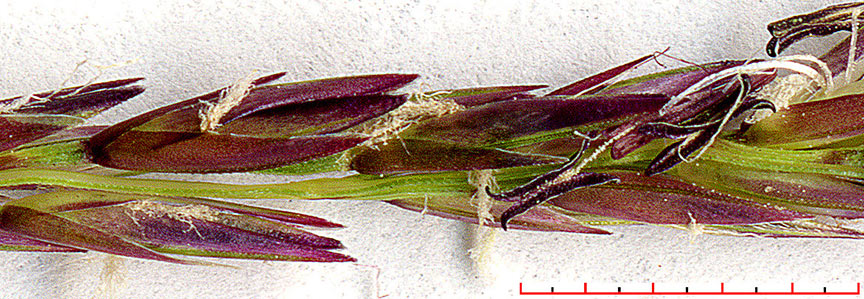
Spikelets at anthesis; September; Hays Co.
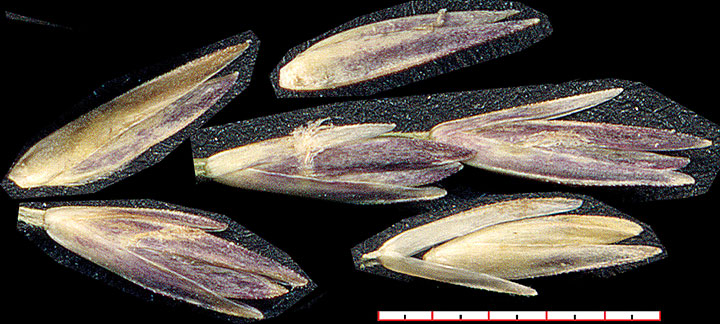
Spikelets, florets; October; Hays Co.
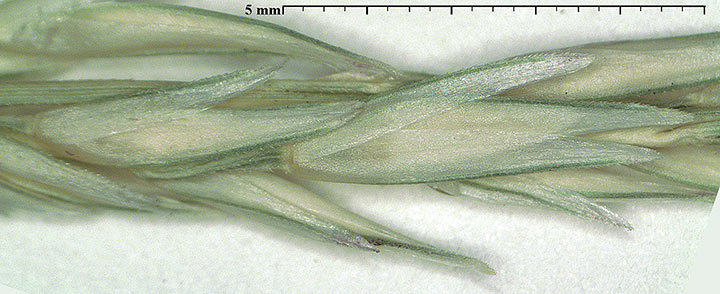
Spikelets; September; Parker Co.
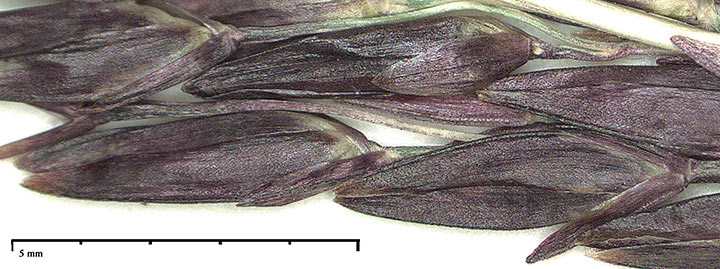
Spikelets; October; Colorado Co.
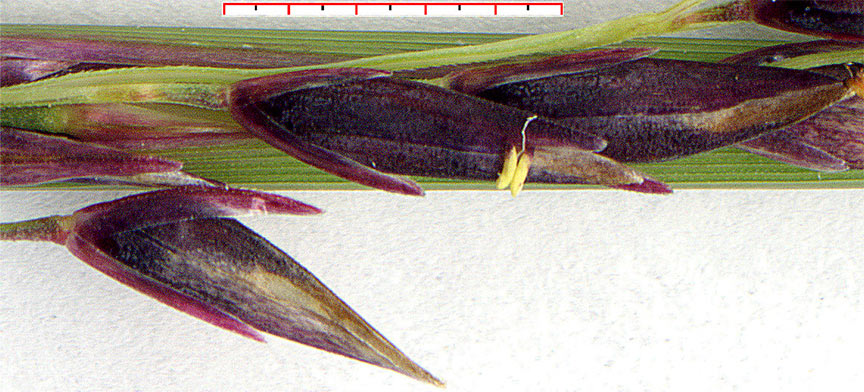
Spikelets at anthesis; September
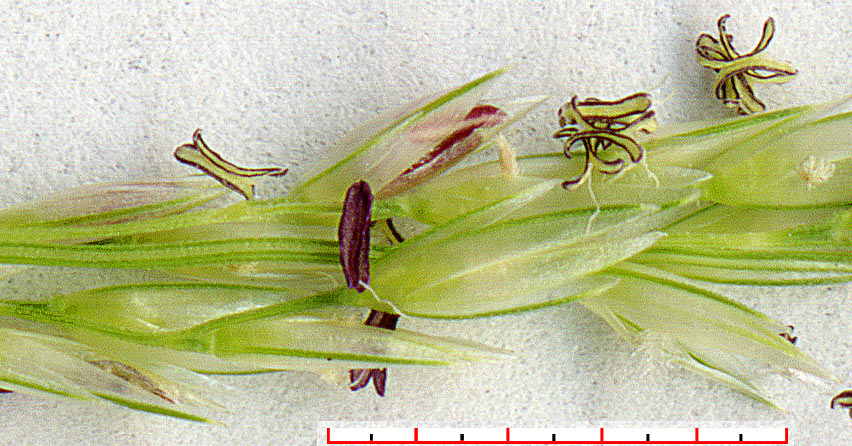
Spikelets at anthesis; September; Hays Co.
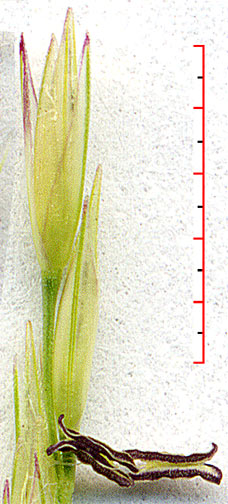
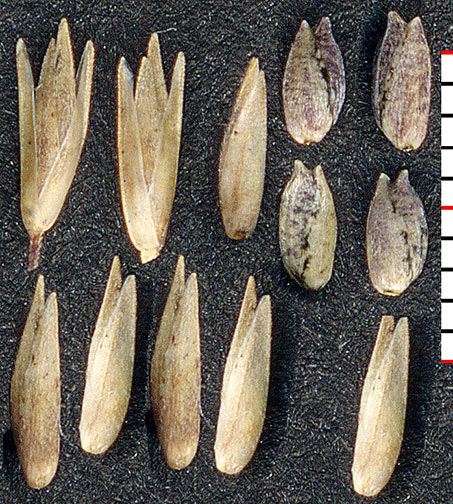
Anthesis; September — Spiklets, florets; November; Hays Co.
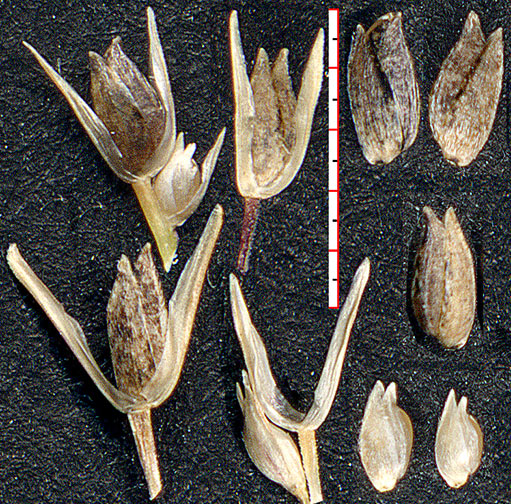
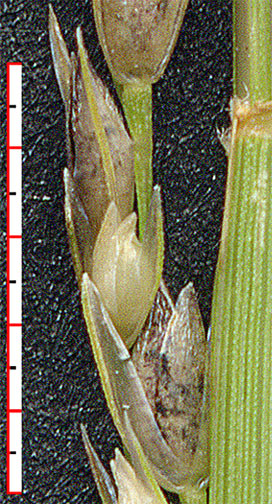
Terminal spiklets, glumes, florets; November
TEX/LL herberia have a total of 5 S. neglectus collections, and only one of these (Riggins 396, Grayson Co., on the Oklahoma border) has numerous spikelets, shown below. 2 were from Grayson Co. 7 other collections (of S. vaginiflorus) from Travis Co. have incorrectly been determined as S. neglectus. The distinction is not subtle. Note that spikelets are significantly shorter, less than 3 mm, used in the FNA key to distinguish S. neglectus from S. vaginiflorus.
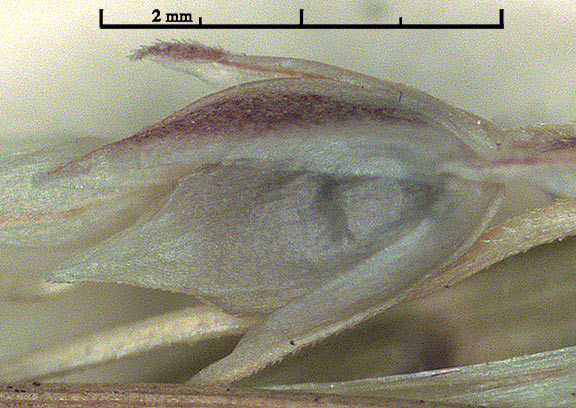
Spiklet from sheath; Grayson Co.

Spiklets extending from sheath; Grayson Co.